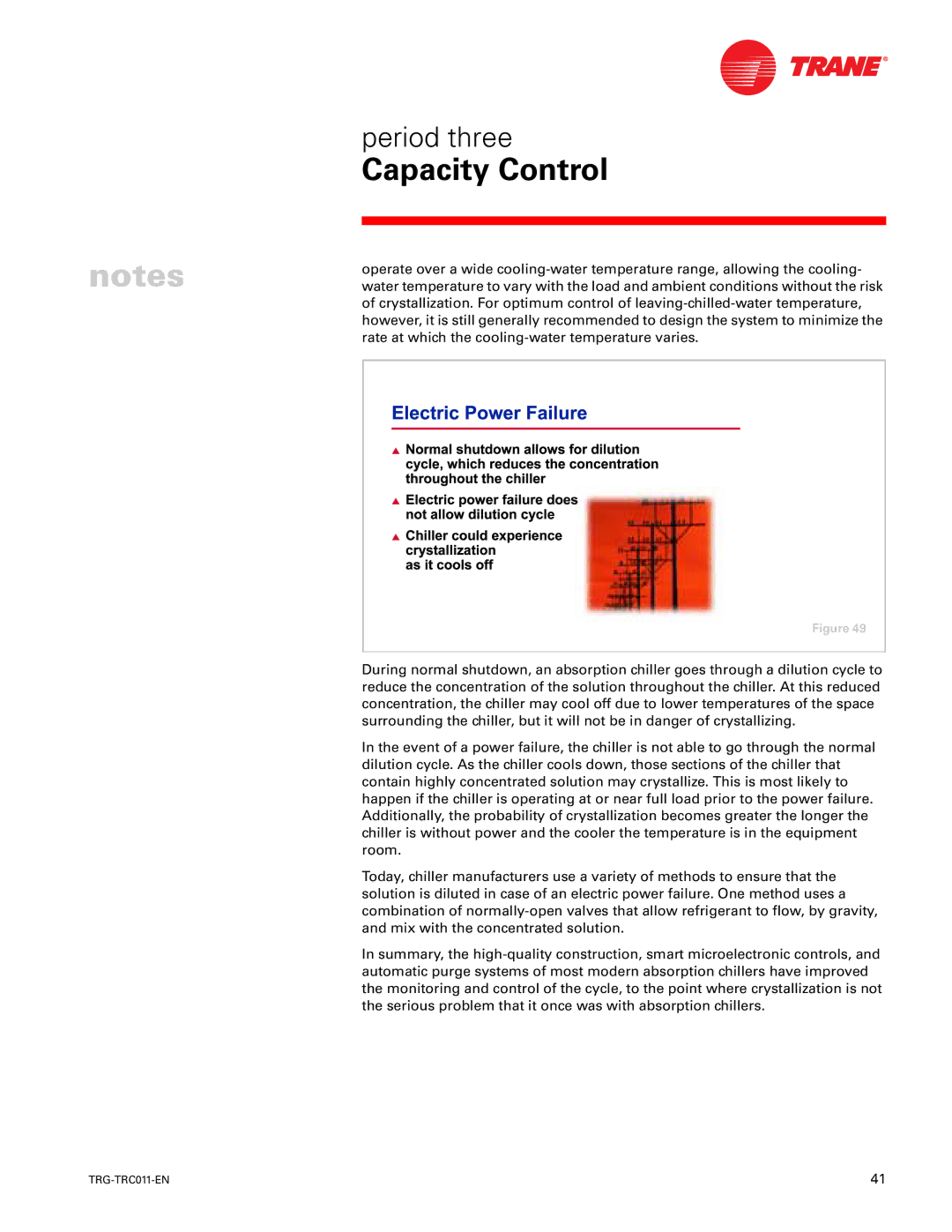
period three
Capacity Control
notes
operate over a wide
▲ |
▲ |
▲ |
Figure 49 |
During normal shutdown, an absorption chiller goes through a dilution cycle to reduce the concentration of the solution throughout the chiller. At this reduced concentration, the chiller may cool off due to lower temperatures of the space surrounding the chiller, but it will not be in danger of crystallizing.
In the event of a power failure, the chiller is not able to go through the normal dilution cycle. As the chiller cools down, those sections of the chiller that contain highly concentrated solution may crystallize. This is most likely to happen if the chiller is operating at or near full load prior to the power failure. Additionally, the probability of crystallization becomes greater the longer the chiller is without power and the cooler the temperature is in the equipment room.
Today, chiller manufacturers use a variety of methods to ensure that the solution is diluted in case of an electric power failure. One method uses a combination of
In summary, the
41 |
